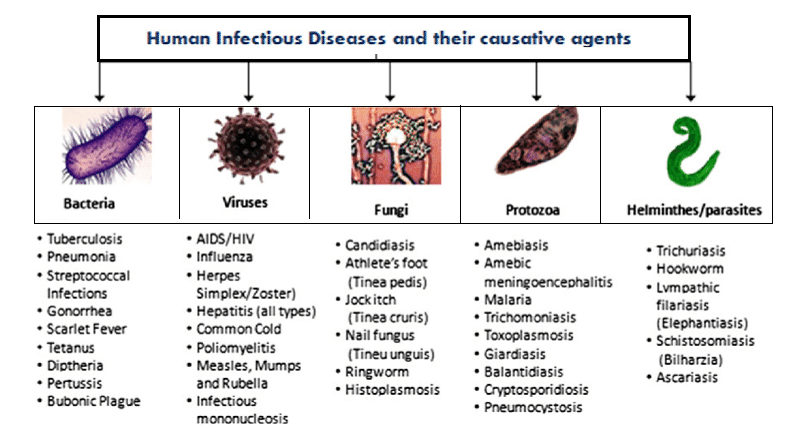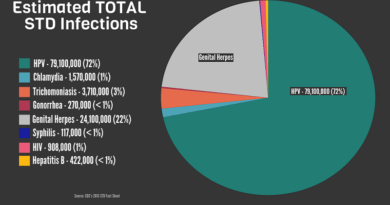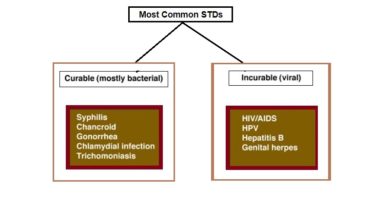Infectious Diseases: Classification and prevention
Infectious diseases are a serious threat to global well-being and are caused by microorganisms. They can spread from person to person, either directly or indirectly. In this article, we will explore the types (classification) of infectious diseases and ways to prevent them. Classification of infectious disease can be based on: causative agents or based on the way of exposure. Infectious diseases can be caused by a variety of microorganisms, including bacteria, viruses, fungi, protozoans, and helminths. These microorganisms can enter the body through various means, such as inhaling droplets from an infected person’s cough or sneeze, consuming contaminated food or water, or being bitten by a vector such as a mosquito or tick.
Prevalence of Infectious Diseases
Infectious diseases have been a significant cause of human suffering throughout history, resulting in both morbidity and mortality. The development of human civilization has influenced the spread of infectious diseases, with the domestication of animals leading to an increase in parasitic and zoonotic diseases, and large settlements and urbanization leading to more airborne viral and bacterial infections.
Humanity has experienced numerous pandemics throughout history, including the plague, smallpox, cholera, and influenza, as well as chronic infectious diseases like tuberculosis and syphilis, which can be silent killers.
Despite significant progress in recent decades, infectious diseases continue to cause a high level of morbidity worldwide. According to the World Health Organization (WHO), there are estimated to be 300-500 million cases of malaria, 333 million cases of sexually transmitted diseases (including syphilis, gonorrhea, chlamydia, and trichomonas), 33 million cases of HIV/AIDS, 14 million people infected with tuberculosis, and 3-5 million cases of cholera globally on an annual basis.
Tope of Infectious Diseases:
I- Infectious Diseases based on Causative agent
Microrgains causing infectious diseases are bacteria, viruses, fungi, protozoa, and helminths. Here is a short note on each group and how to prevent their spread. (SOURCES)
1- Bacteria
- Bacterial infections are responsible for illnesses such as strep throat, urinary tract infections, and tuberculosis. Most of them are curable, and they can be treated with antibiotics, but overuse of antibiotics can lead to the development of antibiotic-resistant strains of bacteria.
- Bacteria examples: Streptococcus pyogenes causing sore throat (strep throat), Escherichia coli causing a variety of infections such as food poisoning and urinary tract infection, and Mycobacterium tuberculosis causing tuberculosis.
2- Viruses
- Viruses can cause a multitude of diseases ranging from mild infections such as the common cold to serious health conditions such as AIDS. Some viruses, such as the flu, can mutate quickly, making it difficult to develop effective vaccines.
- Viruses examples: Influenza virus causing flu, Human immunodeficiency virus which causes HIV infection, and Herpes simplex virus which causes oral herpes and genital herpes.
3- Fungi
- Fungal infections can disease from mild skin infections to severe systemic infections that can be life-threatening, especially in immunocompromised individuals.
- Fungi: Candida albicans which causes yeast infections of the mouth and other parts of the body, Aspergillus which causes lung infections, and Cryptococcus causing meningitis.
4- Protozoans
- These organisms can cause diseases through a vector, water, and food born or direct contact. Malaria and amoebic dysentery are examples. Malaria alone is responsible for hundreds of thousands of deaths each year, mostly in sub-Saharan Africa.
- Protozoans: Plasmodium falciparum (malaria), Giardia lamblia (giardiasis), Entamoeba histolytica (amoebic dysentery).
5- Helminths
- Parasitic worms can cause different infections, including schistosomiasis, a disease that affects more than 200 million people worldwide, and hookworm infections, which can lead to anemia and malnutrition.
- Helminths: Schistosoma (schistosomiasis), Necator americanus (hookworm infection), Taenia saginata (tapeworm infection).
Common Types of Infectious Agents
Here are some common infectious agents that can be classified as I explained above. They are different in shape and size, and cause different diseases. Below are some of the most common types of infectious agents and the diseases they cause:
| Infectious Agent | Agents and Diseases caused |
|---|---|
| Bacteria | Streptococcus pyogenes (strep throat), Escherichia coli (food poisoning), Mycobacterium tuberculosis (tuberculosis) |
| Viruses | Influenza virus (flu), Human immunodeficiency virus (HIV), Herpes simplex virus (cold sores) |
| Fungi | Candida Albicans (yeast infections), Aspergillus (lung infections), Cryptococcus (meningitis) |
| Protozoans | Plasmodium falciparum (malaria), Giardia lamblia (giardiasis), Entamoeba histolytica (amoebic dysentery) |
| Helminths | Schistosoma (schistosomiasis), Necator americanus (hookworm infection), Taenia saginata (tapeworm infection) |
II- Based on the way of exposure
1- Food or waterborne diseases acquired through eating or drinking:
Hepatitis A – a viral disease that spread through the consumption of food or water contaminated with fecal matter.
Hepatitis E – a water-borne viral disease that most commonly spread through fecal contamination of drinking water.
Typhoid fever – bacterial disease spread through contact with food or water contaminated by fecal matter or sewage.
2- Vector-borne diseases acquired through the bite of an infected arthropod:
Malaria – caused by protozoa Plasmodium; transmitted to humans via the bite of the female Anopheles mosquito.
Dengue fever – mosquito-borne (Aedes aegypti) viral disease leading to death in 5% of cases.
Yellow fever – mosquito-borne (in urban areas Aedes aegypti) viral disease associated with a fatality rate is less than 20%.
Japanese Encephalitis – mosquito-borne (Culex tritaeniorhynchus) viral disease fatality rates 30%.
African Trypanosomiasis – caused by the parasitic protozoa Trypanosoma; transmitted to humans via the bite of bloodsucking tsetse flies.
Cutaneous Leishmaniasis – caused by the parasitic protozoa leishmania; transmitted to humans via the bite of sandflies; endemic in 88 countries.
Plague – a bacterial disease transmitted by fleas normally associated with rats; person-to-person airborne transmission also possible; with a death rate in excess of 50%.
Crimean-Congo hemorrhagic fever – tick-borne viral disease; infection may also result from exposure to infected animal blood or tissue; the mortality rate is approximately 30%.
Rift Valley fever – a viral disease affecting domesticated animals and humans; transmission is by a mosquito and other biting insects; fatality rates are low at about 1% of cases.
Chikungunya – mosquito-borne (Aedes aegypti) viral disease, similar to Dengue Fever.
3- water-contact diseases acquired through swimming or wading in freshwater lakes, streams, and rivers:
Leptospirosis – a bacterial disease that affects animals and humans; infection occurs through contact with water, food, or soil contaminated by animal urine.
Schistosomiasis – caused by parasitic trematode flatworm Schistosoma; freshwater snails act as intermediate hosts and release larval form of the parasite that penetrates the skin of people exposed to contaminated water.
4- aerosolized dust or soil-contact disease acquired through inhalation of aerosols contaminated with rodent urine:
Lassa fever – a viral disease carried by rats of the genus Mastomys; infection occurs through direct contact with or consumption of food contaminated by rodent urine or fecal matter; fatality rate can reach 50% in epidemic outbreaks.
5- respiratory disease acquired through close contact with an infectious person:
Meningococcal meningitis – is a bacterial disease; one of the most important bacterial pathogens is Neisseria meningitidis: bacteria are transmitted from person to person by respiratory droplets.
6- animal-contact disease acquired through direct contact with local animals:
Rabies – a viral disease of mammals usually transmitted through the bite of an infected animal, most commonly dogs.
| Type of Exposure | Disease |
|---|---|
| Food or Waterborne | Hepatitis A, Hepatitis E, Typhoid Fever |
| Vector-borne | Malaria, Dengue Fever, Yellow Fever, Japanese Encephalitis, African Trypanosomiasis, Cutaneous Leishmaniasis, Plague, Crimean-Congo Hemorrhagic Fever, Rift Valley Fever, Chikungunya |
| Water-contact | Leptospirosis, Schistosomiasis |
| Aerosolized dust or soil-contact | Lassa Fever |
| Respiratory | Meningococcal Meningitis |
| Animal-contact | Rabies |
Preventing the Spread of Infectious Diseases
Prevention is key to controlling the spread of infectious diseases. Simple measures such as handwashing, covering your mouth and nose when coughing or sneezing, and staying home when sick can simply prevent the spread of infectious diseases.
In addition to personal preventative measures, public health measures such as surveillance, outbreak investigation, and contact tracing are important in preventing the spread of these diseases. These measures allow public health officials to quickly identify and isolate cases of infectious diseases, preventing further spread within communities.
Vaccination is also an effective way to prevent infectious diseases. For example, vaccines succeeded to eradicate smallpox and the drastic reduction of cases of diseases such as measles and polio.
SUMMARY
In this article, we discussed two classification methods for infectious diseases with examples, one based n the causative agents, and the other based on method transmission. Infectious diseases are a significant global health issue, affecting millions of people each year. The prevention and control of these diseases require an integrated approach that includes effective surveillance, vector control, and targeted vaccination programs.
SOURCES
[1] https://www.who.int/standards/classifications/classification-of-diseases
[2] Infectious_Diseases_Characteristics_and_Classification
[3] https://www.britannica.com/science/infectious-disease
[4] https://www.mayoclinic.org/diseases-conditions/infectious-diseases/symptoms-causes/syc-20351173
[5] https://my.clevelandclinic.org/health/diseases/17724-infectious-diseases
[6] https://www.cdc.gov/nchs/icd/index.htm
[7] https://www.ncbi.nlm.nih.gov/pmc/articles/PMC7176237/




